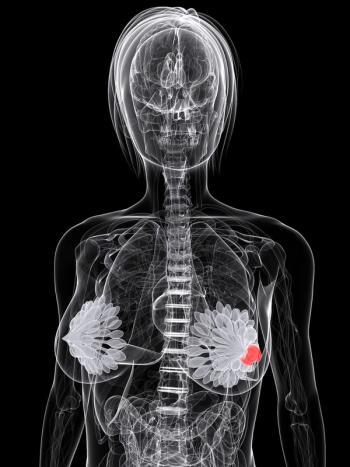
XmAb819 Targets Highly Expressed Protein in Clear Cell Renal Cell Carcinoma
An ongoing phase 1 trial seeks to prove XmAb819 as an effective treatment and ENPP3 as a plausible target in patients with relapsed or refractory RCC.
At the
The trial’s primary objectives are safety, tolerability, and identifying the recommended doses; the secondary end points are pharmacokinetics and antitumor activity; and the exploratory end points are peripheral pharmacokinetics and ENPP3 expression.
Part A of the trial will establish a priming dose, a step-up dose, a cohort-limit dose, and the dosing schedule for both intravenous and subcutaneous administration of XmAb819, and part B will evaluate the safety and efficacy of the recommended dose established in part A.2
Kotecha, a genitourinary medical oncologist at Memorial Sloan Kettering Cancer Center, spoke with CancerNetwork® at the conference and stated that ENPP3 is an optimal target for treating RCC. He described XmAb819 as a 2+1 bispecific antibody that utilizes two of its arms to target ENPP3 and potentially mediate T-cell cytotoxicity.
Transcript:
This was a trial in progress abstract; this is a first-in-human phase 1 study of XmAb819, which is a novel T-cell engager that targets ENPP3 and CD3 for patients with previously treated RCC. The rationale for this is that ENPP3 is highly expressed in clear cell RCC and very lowly expressed, or absent, in normal tissues; [it’s] mostly expressed in basophils and mast cells. Essentially, this provides an optimal target to go after because of that differential expression. XmAb819 is a 2+1 bispecific antibody. What that means is that there are essentially 2 arms to find ENPP3 and 1 area to bind CD3 [and] mediate T-cell cytotoxicity.
This is a multicenter, first-in-human phase 1 study. The primary objective of the study is to evaluate safety and tolerability. The secondary objectives are then to evaluate [pharmacokinetics] and antitumor efficacy. After patients are enrolled, they’re treated on what we call a priming cycle. Patients are then given a low dose—what we call a priming dose—a step-up dose, and then a full target dose. The idea behind that is that with those repeat exposures, you can essentially mitigate and reduce the risks of cytokine release syndrome. That’s one of the primary [adverse] effects that we see with these T-cell engagers. After they hit that full dose that we think [will show] antitumor activity, then they continue that dose weekly, moving forward.
If you think about the landscape of patients with kidney cancer, we are always in search of novel mechanisms of action. If we think about the therapies that are currently available, we have VEGF [tyrosine kinase inhibitors], antiangiogenesis-type therapies, immune checkpoint inhibitors, and then, most recently, an influx of HIF inhibitors. This represents a totally different strategy. We’re targeting a different protein on the surface, which is ENPP3. Using technology in terms of T-cell engagement is something that’s already been shown in other tumor types. It’s bringing that technology in a unique way, with this 2+1 format, but also with a unique target that’s specific to kidney cancer.
Reference
Kotecha R. A phase 1 study of XmAb819 (ENPP x CD3) in subjects with relapsed or refractory clear cell renal cell carcinoma (ccRCC). Presented at: 2025 Kidney Cancer Research Summit; July 17-18, 2025; Boston, MA.
Newsletter
Stay up to date on recent advances in the multidisciplinary approach to cancer.

















































































